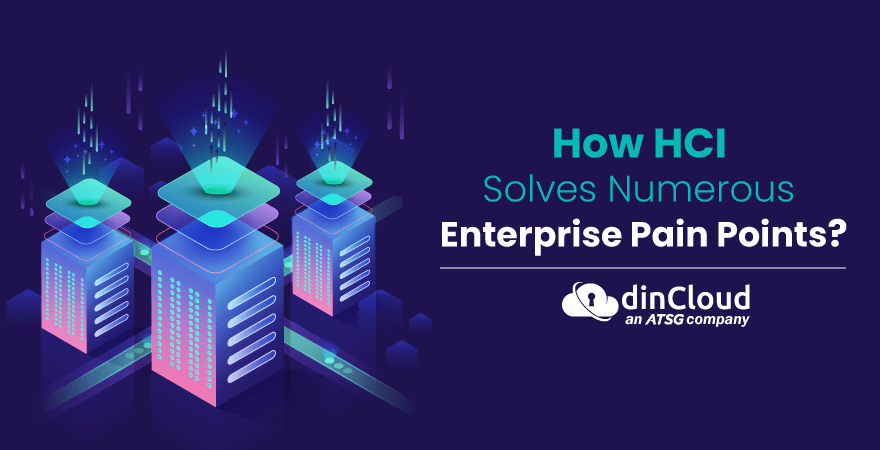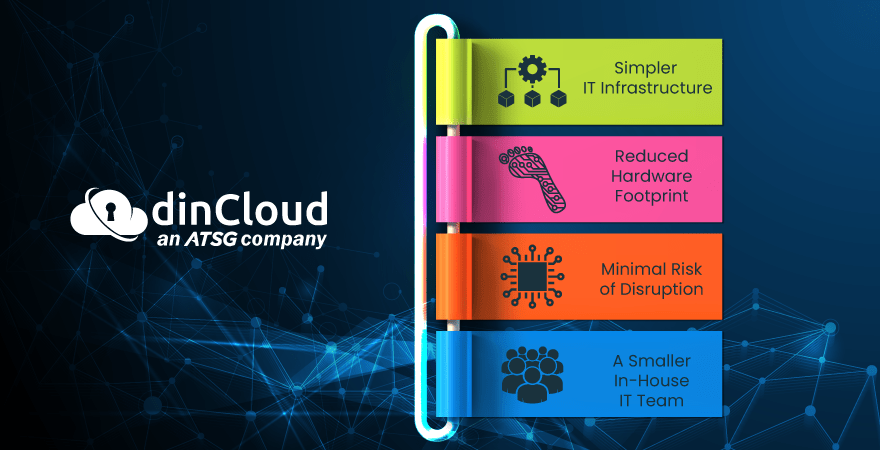Enterprise operations are becoming ever more dependent on digital technologies with every passing day. This process of fast track digitalization was only accelerated by the onset of a global and disruptive pandemic, about two plus years ago.
Turns out, legacy IT infrastructures and the operations, workloads as well as processes built around them are simply inadequate to meet present day needs. Secondly, the competitive landscape and consumer behavior have also rapidly changed since the pandemic.
In order to remain competitive and relevant in today’s fast paced enterprise world, organizations need to pivot towards agile IT infrastructures. This agility is required in the setup, deployment, maintenance, scalability and other few disciplines.

Related: How HCI and Hybrid Cloud are Complementary Technologies?
In this post, we will first define what Hyper Converged Infrastructure (HCI) is, and how these infrastructures help enterprises overcome their longstanding pain points.
What is Hyper Converged Infrastructure (HCI)?
HCI can be defined as a software defined IT environment that combines different IT resources like storage, processing, compute and network into a single cohesive block, while utilizing a single block / chunk of hardware.
In order to better understand the dynamics and functionality of HCI, you first need to visualize a legacy IT infrastructure. It is comprised of several, standalone physical IT resources like servers, storage networks and more.
In the case of legacy IT infrastructures, there is a lot of interdependence among the various physical hardware resources. For instance, if a server fails in a legacy IT environment, you risk disrupting your mission critical processes or workloads, till its restoration.
The rest of your hardware resources might be working perfectly fine, but as soon as any one building block falls apart, the whole system or IT environment is at the verge of an imminent, or certain collapse.
Related: How dinCloud Uses Nutanix HCI for Exceptional Cloud Performance?
How HCI Benefits Enterprises?
Now that we have defined and explained HCI in fair detail, let us jump straight into the benefits that enterprises stand to achieve upon deploying this technology.

Simpler IT Infrastructure
One of the most notable capabilities, and benefits of HCI is that it delivers virtualization capabilities to IT resources. This gives enterprises which go for HCI, the ability to virtualize their resources such as desktops, servers, databases, workloads and applications.
So, instead of a full stack of IT resources, where each piece of physical hardware needs to be procured, deployed, maintained and upgraded on a regular basis, you can create all the core elements of an IT infrastructure on a single block of hardware through HCI.
Related: dinCloud HCI platform, Nutanix a leader in Forrester Wave
Reduced Hardware Footprint
Whether you view IT hardware from a purchase, deployment, maintenance or upgrading perspective, it is a costly undertaking. Even if an organization can afford these resources in-house, it just does not make sense anymore, as there are better alternatives out there.
A classic example of one such alternative is Cloud Computing, in which leading service providers like dinCloud offer all above cited IT resources, hosted out of their cloud data centers across the globe.
This in turn reduces, or nearly eliminates your on-premise IT hardware footprint. As a result, your enterprise not only saves Capital Expenditures (CapEx), but also reduces its IT related operational overheads to a great extent.
Related: Hybrid Cloud Environments and the Benefits of Clusters
Minimal Risk of Disruption
A smaller to negligible IT hardware footprint means lesser points of hardware failure. This in turn results in zero to minimal disruption to your mission critical processes as well as workloads. This is turn elevates your stature as an organization, and a brand too.
IT resources that use Hyper Converged Infrastructure (HCI) at the core can easily be used interchangeably, thanks to its virtualization capabilities. In the odd chance that your HCI based infrastructure does face disruption, the downtime will be negligible.
A Smaller In-House IT Team
Enterprises these days are always striving to drive down costs, and boost efficiency. What better way to accomplish both these goals simultaneously by leveraging HCI. With your core IT resources virtualized, there is no need for large in-house IT teams.
Secondly, by implementing HCI, your IT personnel will be doing way less firefighting, when it comes to managing in-house IT resources. Instead, the time and energies of your IT staff can truly be channelized towards capacity building and value generation.
Conclusion
When we talk of operational agility and flexibility, there is hardly a deployment model that outwits Hyper Converged Infrastructure (HCI). It makes perfect sense that enterprises are shedding away their on-premise IT hardware, and replacing it with the Cloud or HCI.
Contact dinCloud, an ATSG company, which offers the best alternative to on-premise IT resources in the form of its industry leading, enterprise grade Cloud Computing Solutions and Services.


